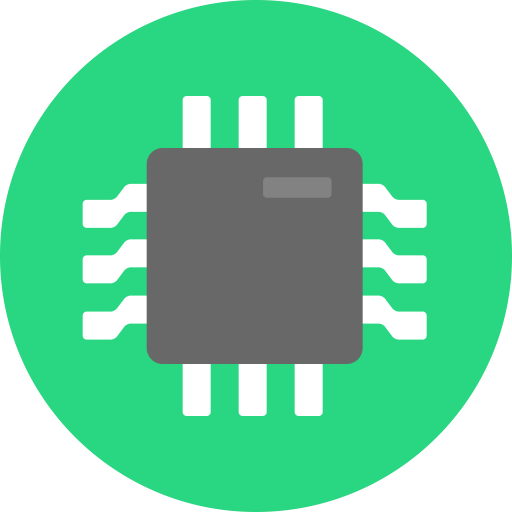monovergent 🛠️
- 40 Posts
- 273 Comments

 5·10 hours ago
5·10 hours agoI installed Ventoy on mine and dropped a few live ISO files: Clonezilla, Linux Mint, and Windows PE
I’ll sometimes use the Windows PE ISO for tools like CrystalDiskInfo. Have Clonezilla to quickly test out random computers without a GUI and Linux Mint when I want a GUI.
The rest of the space comes in handy for quick and dirty file transfers between Linux/Mac/Windows/printers. Especially with my work computer never touching my primary home network, an airgapped retro gaming setup, and most of my other drives formatted for use with Linux.
Some things designed for Windows just don’t work on Linux, Windows LTSC is a great choice for those situations. Some people have had better experiences, but debloating scripts have always been finicky and fragile for me. LTSC comes out of the box without the usual crap and there’s no risk of it all coming back after an update.
You can grab a copy of LTSC 2021 and activation if needed, which will come with the Windows 10 UI and updates until 2032.

 1·2 days ago
1·2 days agoI used to back when I had a snoring roommate. They make ANC earbuds that don’t poke out of the ears, but I haven’t been able to find another pair since the ones from Walmart broke about 5 months in. Then I just got used to sleeping with slightly bulkier earbuds on a thicker pillow.
Would like a variant on this, the bugs and darkness of the woods would drive me insane:
- On a field, farming optional
- Add a soldering station, solar panels, well with pump, and septic tank
- Perimeter tripwires and defense (nobody’s coming to help if something happens)
- Tornado shelter with medical supplies and a healthy supply of 3D filament
And I’ll finally be able to complete everything on my bucket list that doesn’t involve travelling.

 1·3 days ago
1·3 days agoNo issues yet, but I did allow history and cookie retention, if that’s at all relevant. Will keep an eye out though.

 4·3 days ago
4·3 days agoI designed my own weekly planner, updated and printed once weekly, that lets me visualize my time, list unstructured tasks, and journal a bit, all on one page a day:

Upper box are tasks I must finish today and the lower box is for tasks I’d ideally get to, but don’t have to, or just random notes. Tasks and dates beyond the one-week span just get thrown in a mostly-unstructured notebook, which I reference after printing a new weekly planner.
It hasn’t solved everything, but it at least frees my working memory from having to keep a to-do list.
If you are leaving it at home, consider a WiFi-only tablet to eliminate any chance of data leaking through the cell modem. Or perhaps an Android emulator on a laptop, but that does come with its quirks. Better yet, also set up a router with router-level VPN at home just for your Facebook-connected devices. Get a cheap prepaid phone for the SMS activation. Don’t boot anything up until you’re ready and pay with cash or a prepaid gift card at a store you don’t frequent or something like Craigslist if possible.
Normally, there’s a chance of Google/Facebook asking for SMS confirmation again down the road, maybe long after your burner phone plan has expired. But you should be able to prevent this by adding a FIDO/U2F security key as your 2FA method. No idea if this can be set up on the mobile app, but if not, bring an unimportant laptop with a Linux live USB too.
Since you’ve already used Facebook in the past, and considering your use case and the nature of Facebook accounts, they most likely have your home location readily on file. Assuming that your main objective is to keep it from correlating your named accounts to pseudo/anonymous accounts and devices, first step would be to isolate it from your real IP address and browser fingerprint.
Now take everything to a library/cafe/somewhere you can access the internet anonymously. Leave your regular devices behind or at least have them in airplane mode and disconnected from the public WiFi. Set everything up, add your security key for 2FA, install a VPN client if Google/Facebook will allow it. Power everything down before leaving. Only power up the Facebook device once you are back home, ideally connected to a dedicated router with router-level VPN.
I don’t really know how it all works, but sometimes I do think about all the times I’ve logged into accounts with my real name without a VPN. And wonder how many of those companies phone home to Meta with my real IP, letting them establish connections with my pseudonymous accounts I’ve also logged in to without a VPN.
It’s a game rigged in their favor and the slightest mistake can blow your cover. Think carefully if Facebook is your only choice or if you can get by with an alternative. If you must use it, I would agree that a dedicated device, even if imperfect, is still one of the best measures for your privacy.

 2·3 days ago
2·3 days agoI see the point, but there’s a certain dignity in being able to go out with your secrets instead of having some spill them for you without so much as a fight. Unless they whip out the truth serum, idk what I’d do then.

 3·3 days ago
3·3 days agoUnsustainable if the app needs to be updated and not guaranteed to work, but I have ripped out the network and other unnecessary permissions of APKs before using APK Editor Studio.

 3·3 days ago
3·3 days agoGetting some personal projects and bucket-list items done:
- Fixing my sleep schedule and other health habits
- Getting back to my pre-COVID gym schedule
- Making my own mechanical keyboard
- Learning about 3D modelling and acquiring a 3D printer
- Organizing and curating my 6 TB data hoard
- Start learning a new language or polishing up the one I learned in high school
- Finding better furniture and decor, preferably the old kind without particle board
- Travelling

 3·3 days ago
3·3 days ago- Buy second-hand or discounted old stock from a reseller to minimize your contribution to Google.
- Unless one of the apps you are forced to use requires Google Play Integrity, GrapheneOS will be compatible with any Android app, even providing sandboxed Google Play services if needed.
- For apps so invasive as to require Play Integrity, you might be better off leaving them on a secondary phone with stock Android and powered off when not in use.
- The Pixel 5a is the last Pixel device with a headphone jack, but no longer receives GrapheneOS updates. You may want to consider USB-C headsets, which are usually also compatible with computers, and require no extra dongles.
- If the Google headphones work over Bluetooth, they will also work with GrapheneOS. No experience with Google headphones, but I only missed out on customizable shortcuts and device renaming when I opted not to install the companion app for my earbuds.
- Everybody warns against using out-of-date GrapheneOS devices, but that’s not very satisfying. Yes, they will have open vulnerabilities. But as long as you install apps from reputable sources, the chance of being attacked via outdated Android is very low, provided you are not being targeted by an agency.
- That said, grab a more recent Pixel if you can for security updates into the 2030s.
- All Pixel devices have enclosed batteries, most are quite frustrating to remove, particularly the 9a. There’s a decent chance of breaking the screen if it has to be removed in the battery replacement process. Won’t recommend it, but I have considered buying one with a bloated battery just so the adhesives are already removed for me.
- Transferring files to and from any Linux distro works just fine, as with any Android device, bearing quirks of the mtp protocol in mind. LocalSend can be used for wireless file transfer. rsync requires a workaround.
- I’ve used GrapheneOS for the past 4-ish years. I’ll admit I had a head start since my workflow wasn’t too smartphone-dependent in the first place and I had already begun pulling myself out from Apple and Google services back then. Everything just works and I would never look back.

 12·7 days ago
12·7 days agoYou can lead a horse to water … I get the sentiment though. Schooling is a great idea that is too often poorly executed. I’ve found that educational materials for math and science sometimes have a circlejerk kind of attitude, like the authors are laughing at the thought of students struggling with a problem “left as an exercise to the reader” immediately following a wall of dense, incomprehensible text.
Where can I find examples of otherwise dry subjects taught well? Is there an educational system that’s praised in the same way they praise Scandinavian prisons? Or is the pain of learning just a necessary evil?
The need for a larger vehicle might not arise from one week to the next, but the need for more gigabytes can. Windows 11 will happily eat up its entire partition next time it decides to update.
That said, as I type from my computer with only a 60 GB SSD, just make sure you have a plan for when that storage runs out.
Are you able to install a second SSD in your laptop? If you really need to keep it around, it’s best practice to have Windows on its own physical drive.
Or if it’s feasible, make your old laptop your dedicated Windows machine.

 2·9 days ago
2·9 days agoMobile CPUs (any any direct-die cooling for that matter) are more prone to pump-out, where the chip and heatsink expand at different rates with temperature changes, and the varying gap between the two creates a pumping action. It’s best to use a thicker paste to avoid it, or even better, a thermal pad. Not that it’s the best in the long run, but I have gotten away with the thinner MX-4 in my laptop for about a year.
If you have maybe $30 to spare, consider buying some PTM 7950 since it’s second only to liquid metal (very hard to get right), and should be good for many years. Be sure to get it from reputable sellers though since there are fakes for PTM 7950.
Not really, just opening a couple browser windows or spreadsheets, and some video playback. Good to know it shouldn’t be a problem.

 5·10 days ago
5·10 days agoIt’s really tragic and inelegant how we have to jump through hoops and bounce files around a wireless network when the USB cable is just sitting right there. What I had to do since rsync doesn’t work with mtp file paths was to install
android-file-transferand run the following with my phone connected via USB, but not already mounted by the file manager:aft-mtp-mount /path/to/mount/point rsync -a --progress --exclude 'Android/' '/path/to/mount/point/Internal shared storage/' '/path/to/backup/'You can also omit the
--exclude 'Android/'part as needed, I just didn’t want to copy over the quintillion tiny files under that directory.
Building gadgets, modding electronics, and documenting it all so other people can try it out too. In a way, I’d like it to be my job, but my ideas aren’t that profitable and I’m sure selling off my hobby to capitalism would suck the fun out of it.

 16·10 days ago
16·10 days agoAnime profile pictures and wallpapers



I got into the habit of keeping a ~24 GB VM image that I just clone to fresh systems and have yet to find the motivation to hunt down the config files I’ve created or modified over the years. I’d probably want to rip a couple personal in-jokes and spicy comments out, but that would still be very rare.
Not that it’s a dotfile, but much of my customization revolves around the UI, so any potential public repo would include themes, from which I’d remove some more identifying wallpapers. But my desktop config is unique enough IMO that I’m mildly afraid to post screenshots of it on accounts I don’t want associated with this one.